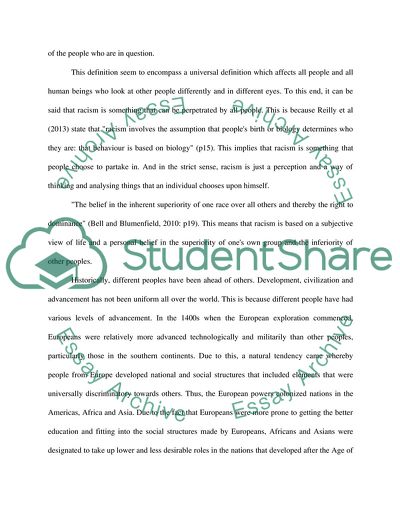Cite this document
(Racism as a Major Problem in the UK and Other Countries Around the World Essay Example | Topics and Well Written Essays - 3000 words, n.d.)
Racism as a Major Problem in the UK and Other Countries Around the World Essay Example | Topics and Well Written Essays - 3000 words. https://studentshare.org/sociology/1812520-non-white-people-cannot-be-racist-because-they-dont-have-any-power-discuss-this-statement
Racism as a Major Problem in the UK and Other Countries Around the World Essay Example | Topics and Well Written Essays - 3000 words. https://studentshare.org/sociology/1812520-non-white-people-cannot-be-racist-because-they-dont-have-any-power-discuss-this-statement
(Racism As a Major Problem in the UK and Other Countries Around the World Essay Example | Topics and Well Written Essays - 3000 Words)
Racism As a Major Problem in the UK and Other Countries Around the World Essay Example | Topics and Well Written Essays - 3000 Words. https://studentshare.org/sociology/1812520-non-white-people-cannot-be-racist-because-they-dont-have-any-power-discuss-this-statement.
Racism As a Major Problem in the UK and Other Countries Around the World Essay Example | Topics and Well Written Essays - 3000 Words. https://studentshare.org/sociology/1812520-non-white-people-cannot-be-racist-because-they-dont-have-any-power-discuss-this-statement.
“Racism As a Major Problem in the UK and Other Countries Around the World Essay Example | Topics and Well Written Essays - 3000 Words”. https://studentshare.org/sociology/1812520-non-white-people-cannot-be-racist-because-they-dont-have-any-power-discuss-this-statement.


